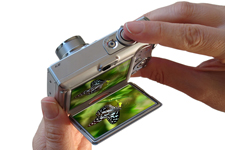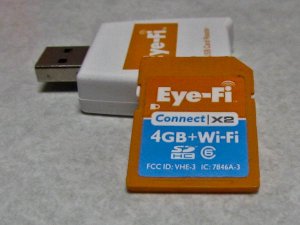Online Magazine
Recent Posts
- Safeguard your Cellphone Photos
- Black & White to Color – Instantly
- Wearing Many Hats
- Video Roundup
- Rescuing Your Blurry Pictures
- Showing Their Age
- What is Your Angle?
- Panorama Photos
- Humorous Photos
- Close Ups
- Fisheye Pictures
- Photo Antiquities
- Printing Big
- Appreciating Scale
- Celebrity Sightings
Tags
More Places to Go
- Free "How-To" Books “How To” books for popular cameras 0
- Vist Us on Facebook keep in touch with us on Facebook 2
Archives
- July 2023 (1)
- March 2023 (2)
- February 2023 (1)
- December 2022 (1)
- October 2022 (1)
- September 2022 (8)
- August 2022 (9)
- July 2022 (1)
- June 2022 (1)
- June 2021 (1)
- May 2021 (1)
- March 2021 (5)
- February 2021 (4)
- January 2021 (2)
- April 2019 (1)
- March 2019 (1)
- February 2019 (1)
- October 2018 (2)
- April 2018 (1)
- March 2018 (4)
- February 2018 (1)
- November 2017 (1)
- August 2017 (1)
- June 2017 (1)
- April 2017 (1)
- March 2017 (5)
- February 2017 (2)
- January 2017 (1)
- October 2016 (1)
- September 2016 (1)
- August 2016 (1)
- July 2016 (1)
- May 2016 (1)
- April 2016 (1)
- March 2016 (2)
- February 2016 (1)
- January 2016 (2)
- December 2015 (1)
- November 2015 (1)
- October 2015 (3)
- April 2015 (1)
- March 2015 (5)
- February 2015 (1)
- January 2015 (4)
- December 2014 (2)
- November 2014 (5)
- October 2014 (2)
- September 2014 (1)
- August 2014 (2)
- July 2014 (1)
- May 2014 (1)
- April 2014 (5)
- March 2014 (5)
- December 2013 (2)
- November 2013 (18)
- October 2013 (1)
- September 2013 (1)
- August 2013 (1)
- July 2013 (1)
- June 2013 (3)
- May 2013 (1)
- April 2013 (2)
- March 2013 (1)
- February 2013 (1)
- January 2013 (1)
- December 2012 (1)
- November 2012 (2)
- October 2012 (2)
- September 2012 (5)
- August 2012 (2)
- July 2012 (1)
- June 2012 (1)
- May 2012 (1)
- April 2012 (4)
- March 2012 (1)
- February 2012 (1)
- January 2012 (3)
- December 2011 (1)
- November 2011 (3)
- October 2011 (1)
- September 2011 (2)
- August 2011 (2)
- June 2011 (3)
- May 2011 (4)
- April 2011 (8)
- March 2011 (8)
- February 2011 (10)
- January 2011 (6)
- December 2010 (11)
- November 2010 (14)
- October 2010 (6)
- September 2010 (12)
- August 2010 (2)
- July 2010 (4)
- June 2010 (3)
- May 2010 (1)
- April 2010 (1)
- March 2010 (2)
- February 2010 (1)
- January 2010 (1)
- December 2009 (1)
- November 2009 (2)
- October 2009 (2)
- September 2009 (1)
- August 2009 (3)
- July 2009 (2)
- June 2009 (1)
- May 2009 (2)
- April 2009 (1)
- March 2009 (2)
- February 2009 (1)
- January 2009 (3)
Recovering Deleted Photos
03rd May 2011
You needn’t panic if you accidently delete your photos from your memory card.
Photo recovery software is designed specifically to recover deleted photos. You can find many affordable recovery programs on the Internet (usually from $19 to $39). All of these programs have similar features and the good news is that none require expert knowledge to use. Most programs have a trial version that you can download and install. You install the software, connect your camera to your computer (or insert your memory card into a card reader connected to your computer) and run the recovery software. This lets you run the program first to test whether it can recover any missing photos.
The program then displays thumbnails of the files it can recover. Then you have the option of buying a registration key for the program and recover the files. If you purchase a registration key, select the thumbnail image(s) you wish to recover and save them (for obvious reasons) to a new location.
One important note is that Windows unfortunately may not recognize your camera as a drive, which is what happened with my Canon XSi. If so, you’ll have to use a memory card reader but they’re not very expensive ($10 to $20).
Make certain to set aside enough time for the program to work. It depends, of course, on how many files are on your memory card but it took some of these programs thirty minutes or so to check out my SD card.
(more…)
Eye-Fi Card – wow!
23rd April 2011
Innovative New Feature Makes the Eye-Fi Even More Valuable
A few months ago, I ran into Ziv Gillat, one of the co-founders of Eye-Fi at a photography trade show. His company developed a set of SD-cards that can send images directly from your digital camera to your personal computer by way of a local wi-fi network.
For background information about these cards, you can read the original review of the Eye-Fi from a few weeks ago here.
To use the new capability which the company calls Direct Mode, I downloaded and installed an update to the included Eye-Fi Center software that is used to configure the SD-card. Using one of the dialogs, I added my iPhone and Android device to my list of supported wi-fi networks. Next I installed the Eye-Fi iPhone app from the iTunes website (and later the Android app from Market) and I was ready to give Direct Mode a try.
(more…)
Flipbac Angle Viewfinder
21st April 2011
You’ve probably come across a situation where you find a great photo opportunity but you cannot frame the photo properly because something is blocking your view in the viewfinder. There might, for example, be a crowd of people, a fence, tall shrub, wall, etc., directly in your line of sight.
One way is to use a camera with a movable LCD monitor so you can snap photos at awkward angles. Unfortunately, most point-and-shoot cameras and digital SLRs don’t have a tilt-and-swivel LCD monitor. Therefore, you may want to consider attaching a Flipbac Angle Viewfinder to your camera.
 |
The Flipbac Angle Viewfinder help you compose shots at high and low angles. |
The Flipbac isn’t fancy; it’s simply a mirror attached to a small wire frame that you can swing a couple of different directions. It does do, however, what it says it will do. It’ll help you compose shots at difficult angles. It does this by reflecting the LCD image on its mirror-like surface, which simulates a screen that’s able to tilt. You can use the Flipbac in either landscape or portrait mode.
(more…)

